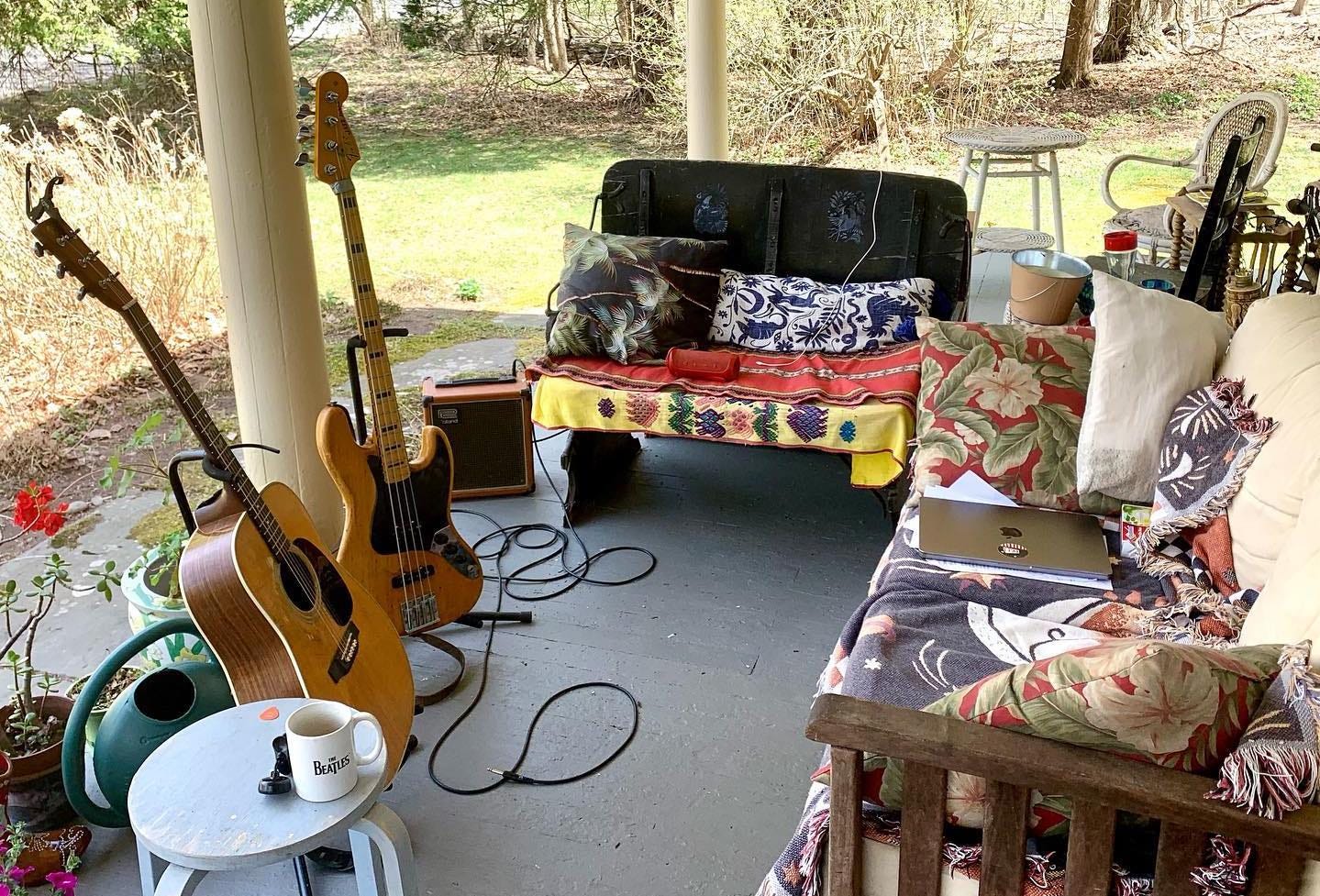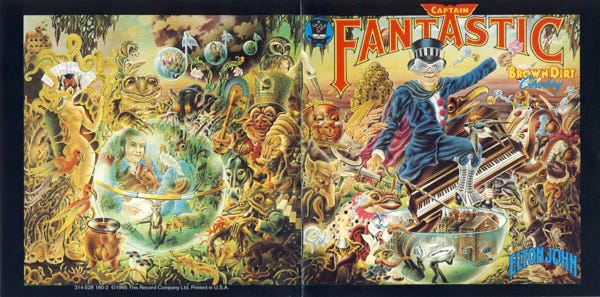Teaching You This Song is Breaking My Heart
It's 4 o'clock in the morning, DAMN IT, listen to me good
I love teaching guitar and bass, even when it makes me cry. Especially when it makes me cry.
I give lessons to all ages in my Phoenicia, NY home, and to students ranging from eight to eighteen at the Rock Academy in nearby Saugerties. The RA curriculum is multi-genre: classic rock, soul, punk rock, metal, Motown, and modern pop, among others. My boss curates themed shows and assigns songs, which I teach, and students perform in ensembles at local venues. (I’m currently prepping my RA students for “Earth, Wind, & Fire vs. Kool & the Gang,” “Pop Punk,” and “Hall & Oates.”) Absolute beginners are often given parts way beyond what they think they can do. In my experience, this “sink or swim” modus operandi is effective. Time and again, I’ve witnessed an exhilarated student surpass expectations. Being cast in bands with their friends is a big motivator. It’s positive peer pressure.
(I am reminded of wanting very badly to impress my bandmates when I was a teen.)
At Rock Academy and in my home, I don’t just teach the bass or guitar part; I also counsel and encourage. Chatting happens. I am genuinely curious, and patient. Only in extreme circumstances will I scold.
Often, I offer some music/cultural history, some context around the song. I tend to my students’ blind spots. It’s normal for a youngster to confuse, say, music of the 60s and music of the 80s. In the same way I once confused the music of the 30s and the 40s. And I’ve occasionally given an accidental history lesson (about segregation, the Vietnam War, the AIDS epidemic, the Civil Rights Movement) by teaching a song.
I mostly teach the way I learned – by ear, by rote. Although I’ve picked up a fair amount of music theory over the years, I neither read nor write musical notation. I listen repeatedly to a song, and, usually in front of my student, I translate the recorded sound into notes, chords, and phrases executed by human hands on a stringed instrument. I spent untold hours doing this as a teen, via LPs. While my body is starting to fall apart, I’m glad to report my ability to learn – and teach – by ear seems sharper than ever.
Sometimes during a lesson, a song slays me and I’ll need to catch my breath. I’m thinking of when I was teaching a youngster the bass part to Elton John’s 1975 hit “Someone Saved My Life Tonight.” (Bass line created by the great Dee Murray, RIP.)
I dial up “Someone Saved My Life Tonight” on Spotify. The iconic piano intro rises from the crappy bluetooth speakers.
Boom - I’m ten years old again. I’m sitting next to my brother in the backseat of our mother’s VW Bug as she drives us through Atlanta, windows down, radio tuned, as always, to WQXI. Elton’s new song is on again, probably the second time that day. Like an unexpected phone call from a beloved friend.
In my memory, Elton John is the most played artist on the radio of my childhood, all his classic 70s material touchstones to some crucial developmental years.
Does ten-year-old me know what the hell he’s singing about? Yes and no. Bernie Taupin’s lyrics are beautiful, ear-grabbing but elliptical. Nevertheless, they entrance me, like an incantation, felt but not understood. The hazy scenes. Someone in trouble, a friend coming to help. Woe. Gratitude. Butterflies.
Also, a cuss word! My brother and I are deliciously scandalized when Elton sings, “It’s 4 o’clock in the morning, DAMN IT!” We anticipate it, then shout DAMN IT along with Elton, and dissolve into giggles.
It won’t occur to me until decades later, when I must learn and teach it, that the song is almost seven minutes long. Turns out, due to its intensely personal nature (according to Google, it’s about his failed 1968 suicide attempt), Elton refused to allow a “radio edit.”
That’s the kind of factoid I usually share with my students.
Back at Rock Academy almost a half-century later, as I listen repeatedly to the song, learning the part in order to teach it, I drop ever further down the rabbit hole.
Internalizing a song so I can play it, and teach it, is not the same as passively listening to it. When I actively listen to the waveforms over and over, then commandeer my hands to flesh it out, I feel I’m communing beyond space and time with the songwriter and the players. In learning an artist’s work, I feel I know a part of them. Not their personality, per se, but their soul.
With “Someone Saved My Life Tonight,” I re-connect to old friends – not just Elton and Co., but to those who were with me, part of me, in 1975.
I make a sound deep in my chest, but I will not attempt to explain to my pupil why I’m verklempt. My young students, bless ‘em, will sort-of listen if I express my nostalgia. But they cannot fathom a song being “all over the radio,” in the firmament, as inescapable in the summer of ‘75 as crickets and birdsong. A ghostly tune arriving haphazardly, yet often perfectly timed, evoking emotions for which you have no words, a message from a strange faraway pal with a voice full of joy, pain, daring, tenderness.
And of course my young charges are far too inexperienced to understand how a melody can uproot them from their timeline and send them back decades. (This they will learn on their own. I sometimes wonder if, years on, the memory of me will factor into their nostalgia.) Mostly, when I swoon over a tune, they look on bemused, maybe a little embarrassed for me, but never unkind.
I’m OK with this dynamic. Indeed, it is for the best. Overall, I love that they’re investing their estimable energy in becoming musicians. I am more than happy to help that along. And practically speaking, an accounting of my personal experience of a song is not really what their parents are paying for when they sign the kid up for lessons.
So I keep the feels to myself. Let the wave rise, crest, crash, recede. Work through it. I am glad not to dwell in the nostalgia. I appreciate the brief time-travel, and the feeling of re-connection to precious bygone days, but all of that mostly renders me useless. Delving into the mechanics of the song, praising my student as they nail the part – all of that delivers me squarely back into the moment, where I am grateful to have this important work to do. As we repeatedly play along to the recording of “Someone Saved My Life Tonight,” I am both teacher and the boy I was, the connecting thread being an undimmed love for a song. Turns out, that love is beyond time.




"Someone Saved My Life Tonight" guts me every single time. And it's a challenge to sing. Well done! Teach the children. They'll have their own song memories soon enough.
I’ll always be grateful for our connection to the tunes of our young lives… the radio stations’ playlists that formed the background and meaning of our existence. In 1964 an AM station in LA played a song called I Wanna Hold Your Hand at 7:30 every morning and in San Diego I tuned my little plastic radio to their signal and thrilled at the static filled music I heard. I hope kids today have some kind of similar inspiration.